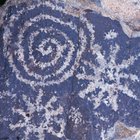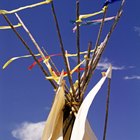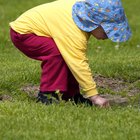
If your grandmother was an Indian, you may qualify for special federal education benefits, among other benefits. Proving your heritage through your grandmother is essential for claiming the benefits. Tribal records aren’t perfect, but most tribes have a record of people born into the tribe after 1900. Find the correct information and legitimize your claim to Indian heritage. Keep a copy of the records proving your grandmother’s tribal affiliation once you’ve located them so that you can prove it to any officials who ask.
Create a family tree, starting with the family members whose heritage you’re sure of that are related to your grandmother. Go back as far as you can until you reach a point where there is no more information. Check around the house for other documents, scrapbooks or newspaper clippings that may help you. Relatives may also be able to provide you with information.
Look up birth records, marriage records and death records by contacting the Department of Vital Records and providing the required information and payment for a birth certificate.
Contact the courthouses in the area where you grandmother was born, where she lived and where she died. Ask for access to civil records. Give her name, social security number and personal information about yourself – along with a fee – to obtain copies of the records.
Log onto the National Archives Catalog and perform a search of the Dawes Rolls. This is a comprehensive list of members of the Creek, Choctaw, Cherokee, Chickasaw and Seminole tribes who were alive and living on tribal land between the years 1898 and 1914. Search for the name of an ancestor specified on your family tree who was alive during that period. Follow the guidance on the National Archives website for instructions on how to search the Rolls.
Contact your regional office of the Bureau of Indian affairs. Ask if they can assist you in a search for your grandmother's name on past rolls. Also inquire about information pertaining to tribes located in the area where she lived. There are other organizations and resources that may be able to help you. Look on the National Archive's "Additional Resources" page for a comprehensive list.
Contact the tribe in the area where your grandmother lived. Explain that you have reason to think she may have been a member of that tribe. Offer to let them see her birth and death records and to provide any information they need to validate or deny your claim.
Related Articles

How to Prove That You're Cherokee

How to Become a Member of Native Tribes

How to Find a Roll Number on the Dawes ...

How to Obtain a Choctaw Indian Roll ...

How to Find Deceased High School Alumni

How to Find Your Dad That You Have ...

How to Become Member of the Navajo ...

How to Find Ancestry in Singapore

How to Find Birth Parents for Free

How to Find Siblings Using the Birth ...

How to Trace the History of a Name

How to Trace Your Family Tree for Free

How to Find Out Who My Great ...

How to Find Lost Relatives

How to Look Up the Roll Numbers for ...

How to Find Out Where Your Family Came ...

How to Find Your Biological Father ...

How to Tell If You Have Italian Ancestry

How to Search for Relatives in Other ...

How to Find an Adopted Child for Free
References
Resources
Tips
- Check around the house for other documents, scrapbooks or newspaper clippings. Relatives may also be able to provide you with information.
Writer Bio
Melly Parker has been writing since 2007, focusing on health, business, technology and home improvement. She has also worked as a teacher and a bioassay laboratory technician. Parker now serves as a marketing specialist at one of the largest mobile app developers in the world. She holds a Master of Science in English.
Photo Credits
Thomas Northcut/Photodisc/Getty Images